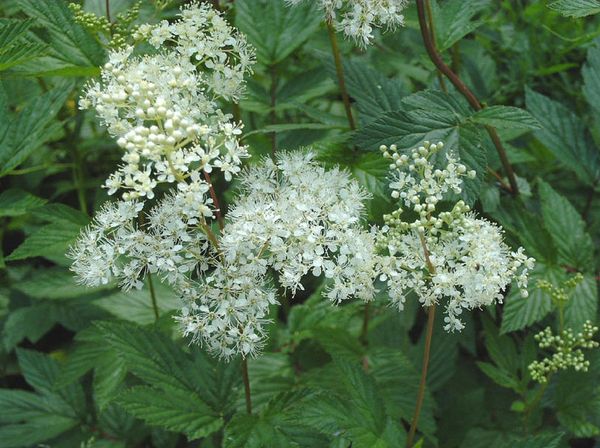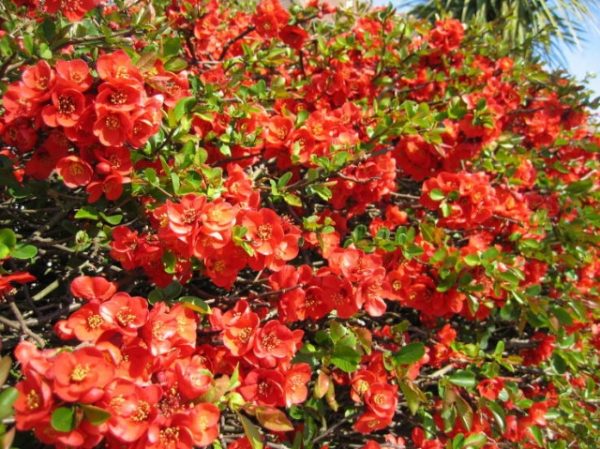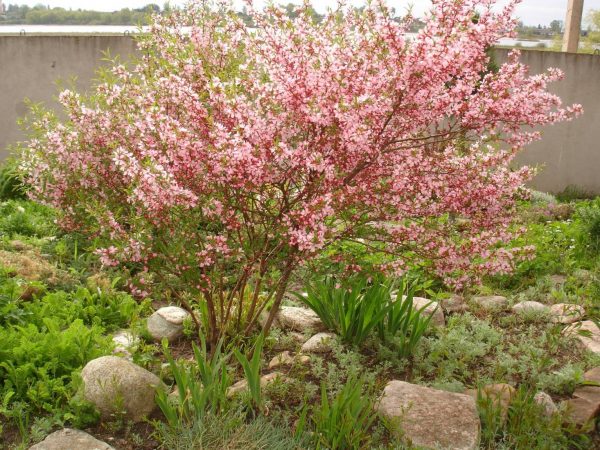Perennial shrubs for your garden: an overview of the most beautiful
Content
Review of popular shrubs
Probably, in every garden there is viburnum, lilac, jasmine - in hot weather they create a blissful shade, during flowering they fill all corners of the garden with a rich aroma. But besides these regulars of any site, there are many other decorative perennial shrubs. And that's who you can "invite" to live in the garden.
Ornamental spray asters are perhaps the brightest possible option. The variety of varieties allows you to create a continuous flowering effect using only asters. Straight stems, depending on the variety, grow up to 50 cm.The flowers resemble baskets, each of which is up to 3 cm in diameter.
The early varieties include alpine asters, which grow up to 30 cm. They bloom from the beginning of June, in single buds up to 6 cm in diameter. The colors are very diverse - all shades of purple, pale lilac, light blue and deep blue, creamy white.
If you prefer tall plants, then the Bessarabian aster variety will satisfy your request - they grow up to 75 cm in height. The flowers of this subspecies are numerous, lilac with a dark core. Another champion in height is the New England variety, which grows up to 2 m. Its inflorescences are collected in bunches of 25-30 pieces, blooming in September.
By color, decorative and border asters are divided into many types:
- Alba - snow-white;
- Superbus and Troyes are blue;
- Rum, Gute, Heinrich Seibert - all shades of pink;
- Dwarf, Hermann Lena, Dunkle Shone - from pale lilac to dark purple, almost black;
- Ruber, Bars Pink, Rubishatz, Beachwood Ravel - from light red to deep burgundy.
Asters, of course, are not the only perennial shrubs that bloom in summer and fall. Buddleya is a tall plant very similar to lilacs. Blooms in early summer and keeps flowers until autumn frosts. A distinctive feature of the buddleya is that it attracts butterflies.
Spirea, or Tavolga, is an unpretentious tall shrub that will surprise you with the variety of forms that its crown can take: spherical, pyramidal, cascade-like. It blooms all summer long, and you can plant it in any corner of the garden. Panicle hydrangea, the bushes of which bloom with many white inflorescences, will also surprise you with their growth - up to 3 m. It belongs to blooming in summer, while as it fades, its flowers change color from white to pale pink.
Weigela is a tall plant that represents curb shrubs reaching a height of 2.5-3 m. Calicant - shrubs blooming with delicate buds, resembling water lilies in shape. A medium-sized plant that blooms in June, will easily settle in any garden area.
Fills your garden with bright yellow flowers in the spring - forsythia. It is curious that forsythia blooms first, and then releases green leaves. Blooming at the very beginning of spring, it looks good both separately from other plants and in group plantings.
Rhododendron is an incredibly beautiful and incredibly whimsical plant.Rhododendrons are divided into three large groups: evergreen, wintering, deciduous. We advise you to pay attention to the Japanese Rhododendron, which will bring a touch of originality to the garden labyrinths. It blooms from June to July.
Kolkvitsia is a close relative of Weigela and Honeysuckle. Kolkvitsiya bushes grow up to 2 m, delighting the eye with straight, densely pubescent branches. Flowers are similar to deep pink bells, collected in inflorescences up to 7 cm in diameter.
Hibiscus cannot be ignored. The varieties Syrian, Diana, Vayelit Ilar Double, Pink Giant will delight you with abundant flowering and large buds. Also belongs to the group of curb shrubs.
Video "Perennial ornamental shrubs for the garden"
Video review of perennial shrubs that bloom throughout the summer. Planting, caring for and growing plants in the garden.
Pay attention to dwarf spruces, which do not exceed 2-2.5 m in height. For example, the Nidiformis variety, about 1 m in height, has a crown of 2 m in diameter, and is frost-resistant. The Tompa variety has a wide conical shape, it grows up to 1.5 m, a big plus of this spruce is that the crown does not need to be cut or somehow looked after. Will's Zwerg has a narrow conical crown with light green needles. Karel looks like a prickly dark green pouf, growing to only 1.5 m.
Japanese quince is a frost-hardy plant. If desired, you can easily give any shape to the quince crown when it has already faded, that is, starting in July. Jasmine, or Chubushnik, will delight you with its lush bloom, and the thick aroma of flowers, and rich greenery throughout the warm season. Blooms in June-July.
The intertwining roses create the effect of a flower cloud with an incredible, thick scent. It is convenient not only because it curls on any more or less suitable surface, but also because of its easy neighborhood with any flowers. For example, asters - perfectly set off and complement the flowering of a weaving rose.
Heather - grows in low bushes up to 80 cm tall. Blooms all summer long, with very abundant beautiful white, pink or red buds. Irga canadian is a lush green plant with sweet berries. The irgi has interesting oval, slightly pointed, leaves, covered with fluff on the underside. Buds are upright, collected in a brush. After a long flowering, irga acquires bright red fruits, which darken over time, acquiring a bluish bloom.
Cinquefoil - blooms with the arrival of the May heat with many small flowers of white or bright yellow color. If your garden lacks rich yellow colors, then pay attention to the varieties Dakota sunrise and Goldfinger; among the white blooming ones the best are Beani and Abbotswood. Potentilla height rarely exceeds 1.5 m.
How to create continuous bloom
Plants blooming all year round are the cherished dream of any gardener. And this is not so difficult to achieve. The set of plants for planting depends on just a few factors:
- landing site;
- flowering time of each plant - planting together is those plants that bloom one after another;
- landing composition.
Curb asters with their flowering cover all warm seasons, starting from the end of April and up to November. Bloom in spring: forsythia, quince, spirea, almonds. In the summer, the flower business continues: barberry, hydrangea, jasmine, weigela, rhododendron, asters.
In autumn, they bloom: hydrangea, heather, mountain ash, the same asters. It's really easy to create continuous blooms. First, think over a planting plan, where you would like to add this or that plant, sketch it so as not to forget, make clear notes / notes. Decide on the style in which you want to see the bushes. For European compositions, chubushnik, barberry, hydrangea, asters are suitable; for the oriental style - rhododendron, quince, forsythia, almond.
The vantage point is also important - arrange all types of plants so that when entering the garden people can see the best aspects of your plantings.And since we are talking about the planting site, then select undersized and medium-sized plants (for example, asters, marigolds) for garden paths, leaving tall ones for the central sections of the flower beds. Do not be afraid to show your imagination when drawing up your ever-flowering paradise and then you will get an amazingly beautiful result.
Video "Original ornamental shrubs and plants»
Video selection of shrubs that are used to create landscaping in the garden.






